There are over 200 staff who work on the critical care unit. Most of them are doctors and nurses, who wear identical blue theatre scrubs, this means that you can’t work out their role by looking at their uniform. Other staff wear specific uniforms that identify who they are. All of the staff who speak to you should identify themselves by their names and what their roles are. On this page we will describe the main groups of staff that you are likely to meet on the critical care unit. These staff are also supported by lots of other staff who work in the laboratories, operating theatres and radiology departments in the hospital. For every patient on the critical care unit there will be dozens of staff trying to help them get better and there will always be doctors and nurses on the critical care unit 24 hours a day, 7 days a week, every day of the year.
Shift Working
Critically ill patients need caring for 24 hours a day, 7 days a week and because of this the unit is staffed around the clock. The number of staff working does not change very much through the day or during the week. To allow this to happen the staff work in shifts, the nurses work in 12 hour day or night shifts while the doctors work in complex shifts that cover days, nights and weekends. This way of working is the only safe way of looking after patients, but it has some inevitable disadvantages. The first of these is that you and your relatives will be looked after by a lot of different doctors and nurses. The second disadvantage is that the shift working is punishing for staff, this means that there is a high turnover of staff so there are always new staff learning their roles. This is made safe by more experienced staff who supervise what’s going on.
Individual Staff Groups
The receptionists
Male and female receptionists wear different uniforms as shown in the photo. They will probably be the first group of staff you will meet on the critical care unit as they work on the reception desks. The receptionists are there to help you when visiting the unit and managing you getting into the unit. They also deal with phone enquires. We have rules to protect patients about visiting and phoning the unit which are described in ‘other information for relatives’. The receptionists have to implement these rules, which can be frustrating to some relatives, particularly as visiting the unit can be a very stressful time. Please don’t take these frustrations out on the receptionists who are doing their best to help you and the patients in the unit.

Band 5 Nurses
The band 5 nurses make up the largest part of the workforce. This group of nurses were more traditionally known as ‘staff nurses’. They are responsible for the day to day care of patients and will be the members of staff that you most commonly see at the bedside. They wear the same blue scrubs that are worn by the trainee medical staff and are also often worn by consultant staff and by the health care support workers. These staff groups can not be distinguished by if they are men or women or by their apparent age or skin colour. This is why it’s important that staff should introduce themselves by name and role. Many of the band 5 nurses are newly qualified but others will have worked on the critical care unit for many years. All of the nurses will have completed 3 years of nurse training and most of them will have obtained or will be working towards an additional critical care qualification.
The support workers
The support workers, also known as ‘auxiliary nurses’, are not qualified nurses but many of them have worked on the critical care unit for many years. They support the nurses in delivering patient care, they also help manage the stock on the unit and support the house keepers. They help the medical staff by setting up the complex equipment that the doctors need for procedures that are carried out on the unit. They wear the same blue scrubs that are used by the nurses and doctors.
Band 6 Nurses
The next most senior group of nurses are the band six nurses. This group of nurses were more traditionally known as ‘Sisters’ or ‘Charge Nurses’. Their also wear dark blue scrubs but they are a different shade of blue and have the manufacture’s name on the arm as shown in the picture. These nurses have additional responsibilities, most importantly in ensuring the nursing care on the 8 bedded pod they are working on is properly delivered. This involves coordinating the other nurses and helping less experienced nurses with complex problems.

Band 7 Nurses
The band 7 nurses are more senior and wear a distinctive red uniform. They are also known as Matrons or ‘Modern Matrons’. There is always a band 7 nurse who is coordinating the unit 24 hours a day 7 days a week. This job involves working closely with the consultants to admit and discharge patients from the critical care unit and making sure that the nursing team is deployed most efficiently to look after the patients. They should walk around the unit each afternoon to talk to the patients and the visitors to check that they are happy with the care being provided. In addition to these very visible roles they also have important roles in the day to day management of the critical care unit.

The Senior Nurses
There are two senior nurses, Rachel Jones and Julie Cheney who work on the critical care unit. They wear distinctive blue uniforms with yellow piping. Their main role is to manage the nursing team and manage many other aspects of the critical care unit.

The Critical Care Pharmacists
Patients who are critically ill normally receive many complex medicines. They have often also been on different drug treatments before they have become critically ill. Ensuring all these medicines are safe and effective is a complex and difficult task. The pharmacists work with the medical staff to ensure that drugs are prescribed safely on the unit. They also work with the nurses to ensure the drugs are available and are given safely. You can help by making sure that the clinical staff know what medicines the patient was taking before they were ill (prescribed or non-prescribed) and bring any of the patients own supply into hospital. If patient has discussed any allergies or adverse reactions to medicines they have had in the past, please tell the pharmacists or other clinical staff and include details of reactions .The pharmacists don’t wear a uniform as they don’t have direct physical contact with patients.

The Practice Educator Team
The critical care unit is a challenging place to work with lots of complex equipment and potent medications. The patients are often very sick and have complicated diseases. All of this would be overpowering for new staff if we did not support and train them. This training role is led by the practice educators who wear magenta coloured scrubs or a magenta uniform. The team also help all staff with the introduction of new equipment or techniques, and they facilitate regular update training for all staff. The team are made up of more senior nurses and most of them also continue to do clinical shifts so they can help new staff at the bed side and ensure that they maintain their own clinical competence.

The Physiotherapists
The physiotherapists wear either white, dark blue or light blue uniforms. The white or dark blue uniforms are interchangeable and both are worn by fully qualified physiotherapists. The lighter blue uniforms are worn by the therapy assistants. The therapy assistants work under the supervision of the physiotherapists, but they are fully competent and have often worked on the unit for many years.
The physiotherapists’ role depends on how sick the patient is, if the patient is unconscious and connected to a ventilator they help stop sputum building up in the lungs and provide passive movement to stop joints and muscles seizing up. As the patient’s condition improves they increasingly support the patient by getting them moving out of bed and then standing and walking. Patients often have to be encouraged in these tasks, but getting patients breathing on their own and then moving are essential parts of getting better.

The Occupational Therapists
The Occupational Therapists’ (OTs) role changes as patients recover from critical illness. For patients that are still unconscious and connected to a ventilator, they help to manage oedema (swelling) in the arms and legs, they provide passive movement to stop joints and muscles seizing up and consider splinting (supports which can maintain a static stretch for a prolonged time safely). For patients who are recovering conscious, and may be experiencing delirium, they will help to reorientate patients and help tailor the environment to keep patients orientated. When patients are getting ready to go home, they assess the patient doing their daily activities and provide helpful techniques to cope during recovery. They will also identify any need for social support. The OTs can also order equipment that may help. For patients who have had a brain injury, the OTs complete specialist assessments and suggest community services that can support both the patient and their loved ones. The Occupational Therapists wear white polo-shirts or tunics with bottle green edging and green trousers.
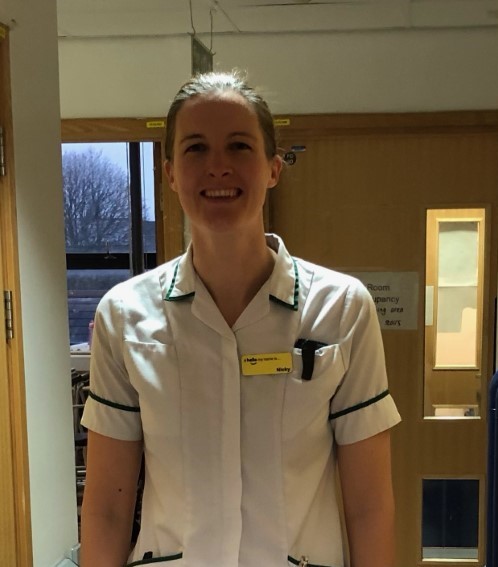
Speech and Language therapists
Our Speech and Language Therapists (SALT) support patients who have difficulties with either communication or swallowing or a combination of the two. Both problems are common in our critical care unit. Patients can struggle with communication due to stokes or brain trauma or breathing tubes or weakness of muscles of the mouth or many other reasons. The SALT team can provide advice (sometimes to the relatives) and communication aids and training for patients. Problems that cause difficulties with communication can also affect swallowing. The SALT team can provide help with diet and with teaching how to sallow after critical illness. The SALT team’s role may continue during recovery on the normal ward and at home. You may be able to help with some recovery exercises and by making us aware of any previous difficulties with communication, voice or swallowing. The Speech and language therapists wear a white uniform with black piping and black trousers.
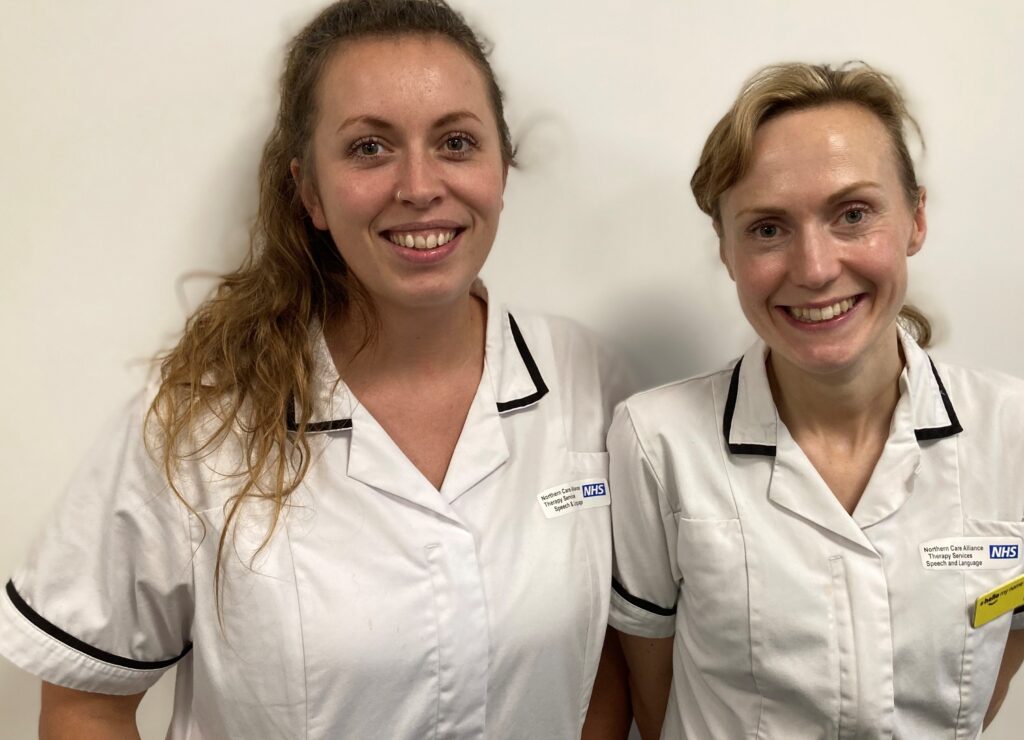
The dieticians
These are two of the Dietitians who work on the Critical Care Unit. They ensure that patients receive the right amount of nutrition, at the right time and in the right way to support recovery.
Dietitians estimate nutritional needs and develop individualised nutritional care plans. Patients who are unconscious and connected to a ventilator receive liquid nutrition into their gut (mostly by a tube from their nose to their stomach) or their blood supply (parenteral nutrition, directly into a drip) depending on their clinical diagnosis. Patients who are recovering and conscious may be able to eat and drink, however, they commonly experience problems with reduced appetite, taste changes or swallowing difficulties. They may require supplementary tube feeding alongside oral diet to ensure adequate nutrition. Patients often feel they don’t need much to eat as they are inactive, however research shows they actually need a lot of nutrition to provide energy for recovery and rebuilding their strength. The dietitians wear a white tunic with a grey rim and black trousers, or scrubs.
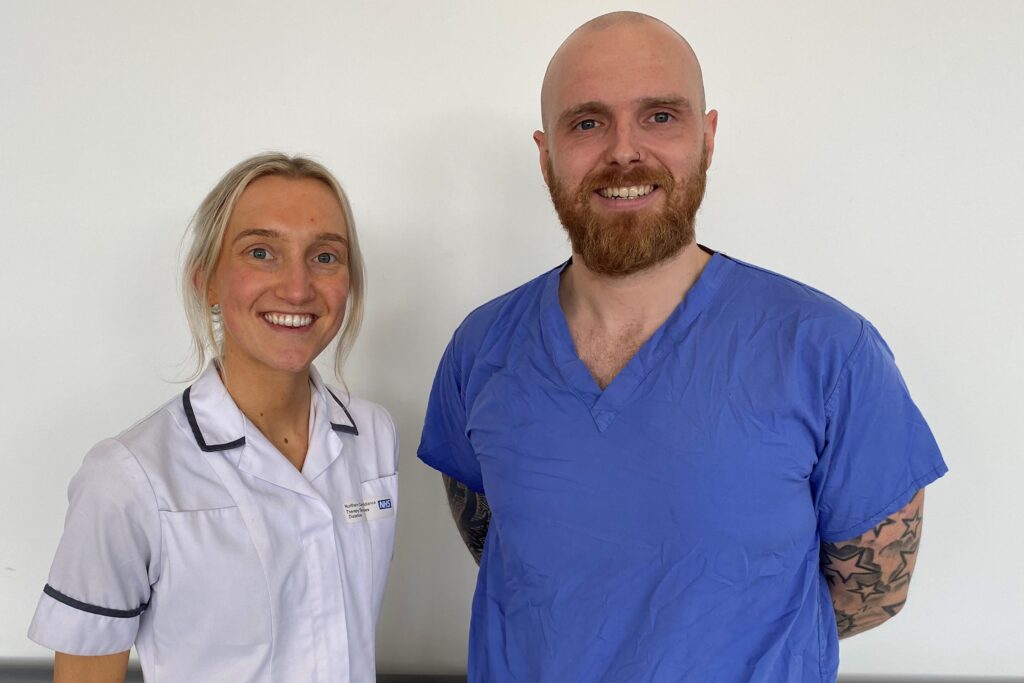
The Clinical Psychologist
The unit clinical psychologist is Dr John Sorensen who is shown in the photograph. John also works with other psychologists in the hospital and with trainee psychologists. A detailed description of how he can support you and your family can be found in the web page ‘I’m finding it difficult to cope’ which can be accessed from the link here or from the main menu ‘other information for patients and relatives’

The Domestics
Infection control is a key part of critical care and having a clean unit is a really important part of controlling infection. For this reason, the Trust has a team of its own cleaners who work on the Critical Care unit every day to keep the unit clean. If you are unhappy about the cleanliness of the unit please let a member of staff know. Keeping the unit clean is a role for all members of staff and relatives can also help by helping to keep the relatives’ room clean.
Although it is possible for patients to acquire infection from the critical care unit environment, most infections in critical care come from our own bodies. We all have many bacteria that normally live on our skin or in our digestive system. These are normally harmless or good for us, but during critical illness our defences don’t work as well and these bacteria may then make us ill. For this reason we constantly look for new infections in critical care. The domestics wear lilac coloured tops.

The Housekeepers
The housekeepers wear a black uniform. The unit uses millions of pounds worth of equipment and disposables every year. All of these need to be ordered and the stock needs to be kept tidy and accessible. Keeping the equipment ordered and stored correctly is the main task of the house keepers. They also have many other roles, these include providing assurance that the unit is clean and tidy and they are also responsible for sorting out the patients’ meals.

The ICNARC team
We have to be able to demonstrate that we are delivering safe care for our patients. One of the ways that we do this is to provide information to the ‘Intensive Care National Audit and Research Centre’ who collect information about all the critical care units in England and Wales. They then produce reports that benchmark all the units in the country. Collecting the information that we need for this is complicated so we have a team who do this. A couple of the team are shown below. Their black uniforms are similar to those worn by the housekeepers, although their role is very different.
The results of the ICNARC audits are available from their website. The results for our unit are good but need to be interpreted with caution as the audit method does not cope well with multiple injuries; many of our patients have multiple injuries. We are also regularly inspected by the Care Quality Commission and by the Greater Manchester Critical Care network. In addition to this, patients with multiple injuries are audited by the TARN (Trauma Audit and Research Network). All of these reports are freely available from these organisations. The ICNARC team also collect data for these reviews.

The Critical Care Consultant Staff
The critical care consultants are responsible for directing the care of all the patients on the critical care unit. As consultants they will have undergone more than 10 years of postgraduate training. Consultant staff are available 24/7 and for most of the day and night there will be at least one consultant on the critical care unit. When working on the unit they will be wearing grey scrubs or their own cloths. They may also wear blue scrubs as many of the critical care consultants are also consultant anaesthetists and blue scrubs are worn in the operating theatre.

The Junior Doctors
Hospital doctors are described as ‘Junior Doctors’ before they become consultants. The description ‘Junior Doctor’ is in common usage, but it does not do justice to the years of training that these doctors will have already completed before they start work on our unit. The junior doctors wear the same blue scrubs as most of the nursing staff, the medical staff are therefore not identifiable by their uniform. At least half of junior doctors are women and many of the nurses working on the unit are men.
The Junior Doctors provide the day to day medical care for the patients under the direction of the consultant staff. The have all completed 5 to 6 years of training to become qualified doctors and will be working through the 10 years of postgraduate training that is normally required to become a consultant. There are several grades of ‘junior doctor’. In the first two years of training doctors complete ‘Foundation years’ and we have FY1 and FY2 doctors working in critical care. These doctors used to be known as ‘house officers’. They then start core training towards their selected specialties, again we have CT doctors working in critical care. These doctors used to be known as ‘SHOs’ or ‘senior house officers’. Our CT doctors are mostly starting to work towards being consultants in anaesthetics, emergency medicine, intensive care or medical specialities. Doctors then work through years of Speciality Training, our ST doctors are mostly training to be anaesthetists or intensive care consultants. They are mostly banded from ST3 to ST7 depending on their successful progression through years of training. These doctors used to be known as ‘Registrars’ and ‘Senior Registrars’ Most of the consultants working on our critical care unit have been junior doctors on our unit during some part of their training.
Advanced Critical Care Practitioners (ACCPs)
ACCPs are a new group of staff who have originally qualified as nurses or physiotherapists and will have then worked in critical care. They will then have completed a two-year Master’s Degree to become ACCPs. ACCPs take on many of the roles that would previously have been carried out by the trainee medical staff and they work as part of the junior doctors’ on-call rota. They are empowered to make high-level clinical decisions to ensure that patients receive timely, personal, and effective care. We also have trainee ACCPs training on our unit. They wear the same blue scrubs as the doctors and nurses.
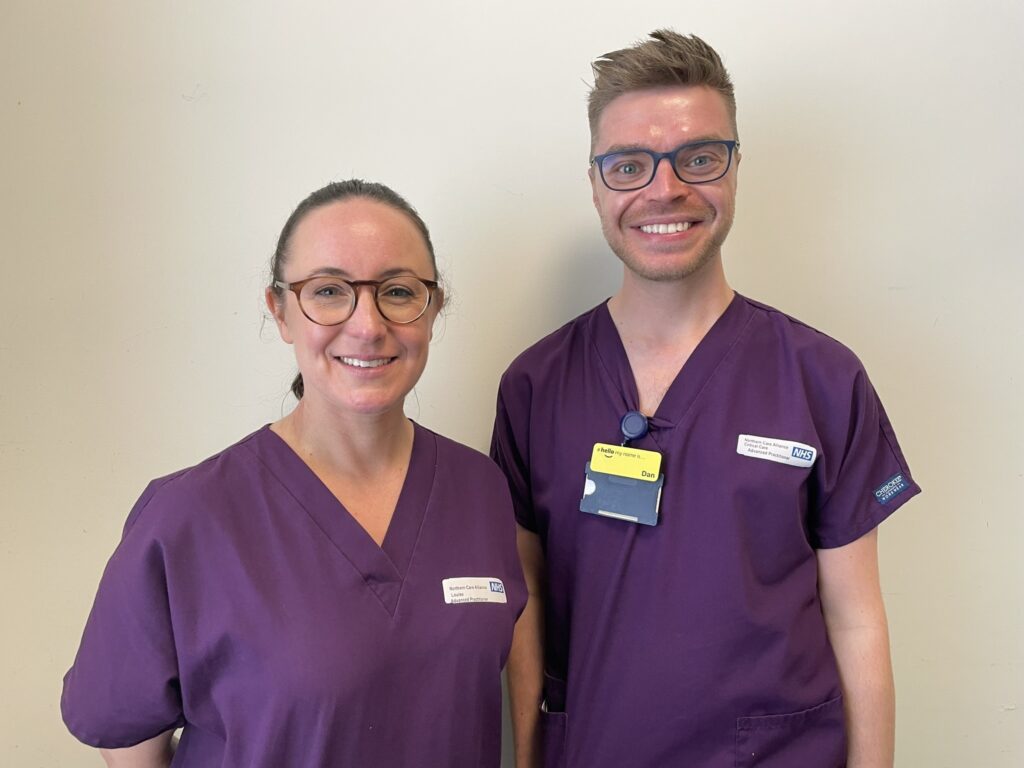
Visiting teams and visiting and named consultants.
Patients in critical care are looked after by both the critical care team and the team that referred the patient to critical care. The critical care consultants often have to coordinate the input from many visiting consultants who each deal with different aspects of a patient’s illness. For example, a patient may have an operation done by a surgical consultant but the patient also has severe heart disease, which is looked after by a cardiology consultant. The visiting consultants will either be wearing their own cloths or blue theatre scrubs.
The patient may be looked after by one referring consultant who is responsible for the patient throughout their hospital stay and in the outpatient department, this is most commonly the case for elective surgical patients. In this case the consultant is the patient’s ‘named consultant’ , their name will be at the top of the patient’s notes. The visiting and named consultants may visit the unit on their own or with the rest of their teams. The photo shows one of the hospital’s consultant surgeons, Miss Naheed Farooq, visiting with her team. The team includes junior doctors and specialist nurses, all of whom will also visit patients on the critical care unit on their own when needed. If you want to speak to a non-critical care consultant then you can arrange this through their secretaries. This can be done via switch board or asking the critical care staff. Sometimes a visiting or named consultant will decide that they want to speak to the relatives themselves; they will normally want to do this in the late afternoon.

The pain team
Treating pain and keeping critically ill patients comfortable can be difficult and we have a team of pain consultants and specialist nurses who visit the unit every day to advise us and help us manage pain. The specialist nurses will wear a dark blue uniform. If you feel your relative is in pain please make sure the nurse at the bedside knows this.
The research team
Many of the patients in the critical care unit take part in clinical trials to help us understand how best to treat critical illness. These trials are very tightly controlled and deal with issues where we are unsure of the best treatment. If a patient is eligible to take part in a trial this will be explained to the patient or relatives and they can either consent or not consent to take part in the trial. Being a research centre actually improves the care given to all patients, even when they are not in a trial. This is because being a research centre helps us standardise the most up to date treatments for our patients. Obtaining consent and managing the trials are the roles of the research nurses and practitioners who wear a dark blue uniform. The research team work with the critical care consultants including Professor Paul Dark. Professor Paul Dark is one few professors of critical care medicine in the UK. He is a world expert in critical care research.
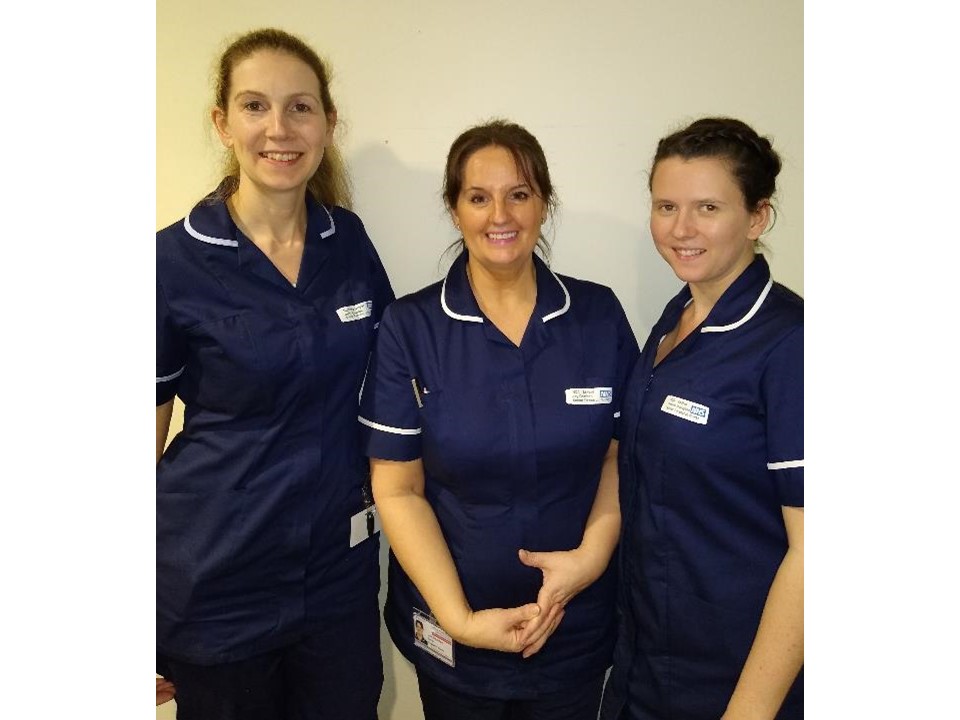
The microbiology ward round
The microbiology consultants review all of the patients who are on antibiotics on the critical care unit and all of the patients with new potential infections on Monday, Wednesday and Friday afternoons during visiting hours. They are joined on the round by critical care medical staff and pharmacists and all the antibiotic treatments are reviewed at this time. The microbiologists are also available for advice at any other time. Most of the other ward rounds happen in the morning before visiting, but the microbiology round has to happen in the afternoon as not all of the infection results are ready before lunch.
Student Nurses
Qualified nurses have to have passed a 3 year degree course. The course has some theory but it is also a very practical course and the student nurses learn to be qualified nurses by working on the wards. To help with this we have student nurses on the critical care unit, they come for 8 week attachments towards the end of their course. They are easy to identify by their specific uniform, as shown in the photo.
They are very closely supervised by the qualified nurses and their training is managed by the practice educators. Most of the students come from Salford University.
Medical Students
Salford Royal Hospital is a teaching hospital; as such we train medical students. To help with their training, medical students may work in the critical care unit. The students will be at different stages of their clinical training but will have completed at least the first two years of their training. They work under the very close supervision of the qualified medical staff. They improve patient care by questioning what we are doing and having more time to talk to patients and relatives. The medical students also wear blue scrubs so they look the same as the doctors and nurses, but they will introduce themselves as medical students and not doctors.